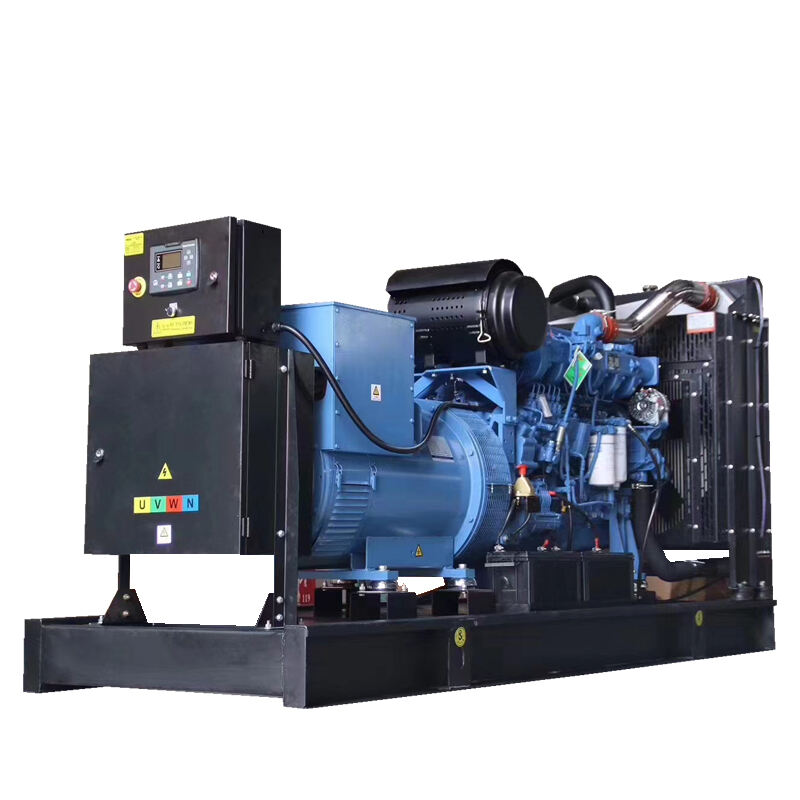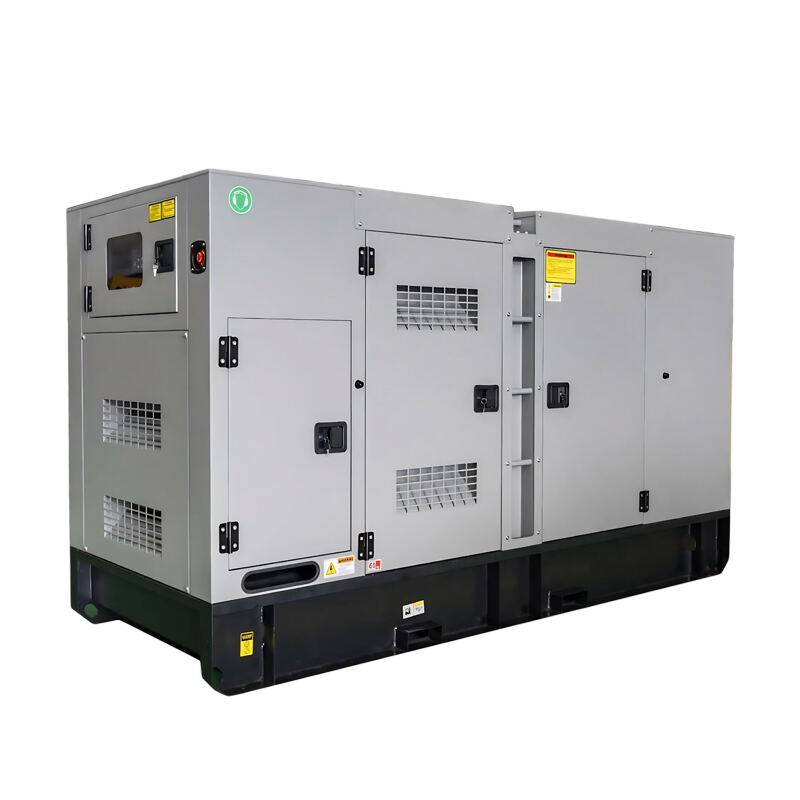What Are the Environmental Impacts of Using Diesel Power Generators and How Can They Be Minimized?
Diesel power generators have long been the backbone of backup electricity supply in industrial plants, commercial buildings, hospitals, construction sites, and even residential areas. They are known for their reliability, high efficiency, and ability to provide power in places where grid electricity is unavailable or unstable. However, while diesel power generators deliver undeniable benefits, they also raise serious environmental concerns. The emissions, noise, and fuel consumption associated with them contribute to global warming, air pollution, and other ecological challenges.
This article examines the environmental impacts of diesel power generators and explores effective strategies for minimizing their negative effects while still meeting growing energy demands.
Understanding Diesel Power Generators
A diesel power generator is a machine that converts the chemical energy in diesel fuel into electrical energy. It typically consists of a diesel engine coupled with an alternator. The engine burns diesel fuel to produce mechanical energy, which is then converted into electricity. Diesel power generators are commonly used as backup systems, but in remote areas without grid access, they may serve as the primary energy source.
Their advantages include durability, long lifespan, high energy density, and the ability to run continuously for extended periods. However, these benefits come at a cost when considering their environmental footprint.
Environmental Impacts of Diesel Power Generators
Air Pollution and Greenhouse Gas Emissions
One of the most significant environmental impacts of diesel power generators is their contribution to air pollution. When diesel is burned, it emits a range of pollutants, including:
Carbon dioxide (CO₂), a major greenhouse gas contributing to climate change.
Nitrogen oxides (NOₓ), which contribute to smog and acid rain.
Sulfur dioxide (SO₂), which causes respiratory problems and environmental degradation.
Particulate matter (PM), microscopic particles that penetrate deep into the lungs and bloodstream, causing severe health issues.
Carbon monoxide (CO), a toxic gas that reduces oxygen delivery in the body.
The cumulative effect of these pollutants worsens air quality and accelerates global warming. In urban areas where diesel power generators are widely used, the localized increase in air pollution can be substantial.
Noise Pollution
Diesel power generators are noisy, often producing sound levels between 75 and 100 decibels. Continuous exposure to this level of noise contributes to hearing damage, stress, and decreased productivity. Noise pollution also affects wildlife by disrupting communication, reproduction, and navigation.

Fuel Consumption and Resource Depletion
Diesel fuel is derived from crude oil, a finite resource. Dependence on diesel power generators contributes to fossil fuel depletion and reliance on oil imports in many countries. The extraction, refining, and transport of diesel fuel further contribute to environmental degradation and greenhouse gas emissions.
Soil and Water Contamination
Fuel leaks, improper storage, and accidental spills of diesel can contaminate soil and water resources. Contaminated soil becomes infertile, while water pollution affects aquatic ecosystems and drinking water supplies. Cleaning up diesel spills is costly and environmentally damaging.
Carbon Footprint of Manufacturing and Maintenance
The environmental impact of diesel power generators extends beyond their operation. The manufacturing process of engines, alternators, and components consumes energy and raw materials, adding to their carbon footprint. Additionally, frequent maintenance, such as oil and filter changes, generates waste that must be disposed of responsibly.
Health Implications from Environmental Pollution
The pollutants released by diesel power generators also have direct health consequences. Long-term exposure to nitrogen oxides and particulate matter has been linked to respiratory diseases, cardiovascular problems, and cancer. Vulnerable populations such as children, the elderly, and those with pre-existing conditions are particularly at risk.
Strategies to Minimize Environmental Impacts
Although diesel power generators are inherently polluting, several strategies can minimize their environmental footprint while maintaining their reliability.
1. Use Cleaner Diesel and Alternative Fuels
One effective step is to transition to ultra-low sulfur diesel (ULSD), which significantly reduces sulfur dioxide emissions. Additionally, blending diesel with biodiesel, derived from renewable resources like vegetable oils and animal fats, lowers overall greenhouse gas emissions.
Emerging fuels such as synthetic diesel, made from natural gas or renewable sources, are also being explored to reduce pollution while maintaining compatibility with existing engines.
2. Install Advanced Emission Control Systems
Fitting diesel power generators with emission control technologies such as selective catalytic reduction (SCR) systems, diesel particulate filters (DPF), and exhaust gas recirculation (EGR) can dramatically reduce harmful emissions. These technologies capture particulate matter, reduce nitrogen oxides, and ensure cleaner exhaust gases are released into the atmosphere.
3. Optimize Generator Efficiency
Regular maintenance ensures that diesel power generators operate at peak efficiency, minimizing fuel consumption and emissions. This includes cleaning air filters, checking fuel injectors, monitoring oil levels, and ensuring proper load management. Running generators at optimal load also prevents inefficient fuel use and incomplete combustion.
4. Implement Noise Reduction Measures
Noise pollution from diesel power generators can be minimized by using acoustic enclosures, silencers, and vibration-dampening mounts. Proper site planning, such as installing generators away from residential areas or wildlife habitats, also helps mitigate noise impact.
5. Adopt Hybrid Systems
Combining diesel power generators with renewable energy sources such as solar or wind can significantly reduce overall fuel consumption and emissions. Hybrid systems use renewable energy as the primary power source, with generators providing backup only when necessary. Battery storage further reduces reliance on constant generator operation.
6. Energy Management and Smart Controls
Modern generators can be integrated with smart energy management systems that monitor load demand in real time. This allows for automatic adjustments, ensuring the generator only runs when necessary and at optimal efficiency. Load sharing between multiple units also reduces unnecessary wear and fuel consumption.
7. Recycling and Responsible Disposal
Waste generated from diesel power generators, such as used oils, filters, and batteries, must be recycled or disposed of responsibly to prevent environmental contamination. Manufacturers and operators should establish recycling programs and follow regulations for hazardous waste management.
8. Transition to Cleaner Alternatives Over Time
While diesel power generators will remain essential in many applications for years to come, industries should gradually transition to cleaner technologies. Natural gas generators, hydrogen fuel cells, and renewable-powered systems offer promising alternatives for reducing environmental impacts in the long term.
Regulatory Measures Supporting Cleaner Use
Governments and international organizations play a key role in minimizing the environmental impact of diesel power generators. Regulatory measures include:
Emission standards that limit NOₓ, SO₂, and particulate matter levels.
Incentives for using ultra-low sulfur diesel or biodiesel blends.
Noise regulations requiring soundproofing for generators in urban areas.
Subsidies and tax breaks for adopting hybrid or renewable-based systems.
Compliance with such measures ensures that operators prioritize sustainability alongside reliability.
Case Studies: Minimizing Impacts in Real-World Applications
Hospitals and Critical Infrastructure
Hospitals rely on diesel power generators for emergency power, but many have adopted ULSD and emission filters to reduce pollution. Some have incorporated solar panels with battery storage to reduce generator run times.
Construction Industry
Construction sites frequently use diesel power generators. Companies adopting hybrid systems with battery packs reduce idle time and emissions while lowering fuel costs.
Remote Communities
In off-grid areas, hybrid microgrids combining diesel power generators with solar and wind energy are providing reliable power with lower environmental impacts. These systems reduce fuel dependency and improve air quality.
Future Outlook
The future of diesel power generators is evolving as sustainability takes center stage. Research is ongoing into developing cleaner fuels, improving generator efficiency, and integrating advanced emission controls. In parallel, renewable energy technologies are becoming more affordable, reducing reliance on diesel as the primary power source.
While diesel power generators are not likely to disappear soon, their role will increasingly shift toward backup or hybrid support in systems dominated by clean energy. Manufacturers will continue innovating to ensure that the environmental footprint of these machines is minimized.
Conclusion
Diesel power generators have long provided dependable electricity where and when it is needed most. However, their environmental impacts — from air pollution and greenhouse gas emissions to noise, soil contamination, and resource depletion — cannot be ignored.
Minimizing these impacts requires a combination of strategies: using cleaner fuels, installing emission control systems, improving efficiency, reducing noise, adopting hybrid solutions, and ensuring responsible waste management. With proper regulation and technological advancements, diesel power generators can continue to serve critical roles while aligning more closely with environmental sustainability goals.
By embracing these practices, industries and communities can enjoy the reliability of diesel power generators while reducing their ecological footprint and contributing to a cleaner, healthier future.
FAQ
Why are diesel power generators still widely used?
They are highly reliable, efficient, and capable of running for long durations, making them essential for backup and remote power applications.
What is the biggest environmental concern with diesel power generators?
Air pollution, particularly emissions of nitrogen oxides, particulate matter, and carbon dioxide, is the most significant issue.
How can the emissions from diesel power generators be reduced?
By using ultra-low sulfur diesel, biodiesel blends, emission control technologies, and hybrid systems that combine renewables with generators.
Are diesel power generators being replaced by renewable energy?
Not entirely. While renewables are expanding rapidly, diesel power generators remain crucial for backup power and off-grid areas, though their role is being reduced.
What role will diesel power generators play in the future?
They will continue to provide backup and emergency power but will increasingly be used in hybrid systems with renewable energy to reduce their environmental footprint.
Table of Contents
- What Are the Environmental Impacts of Using Diesel Power Generators and How Can They Be Minimized?
- Understanding Diesel Power Generators
- Environmental Impacts of Diesel Power Generators
- Health Implications from Environmental Pollution
-
Strategies to Minimize Environmental Impacts
- 1. Use Cleaner Diesel and Alternative Fuels
- 2. Install Advanced Emission Control Systems
- 3. Optimize Generator Efficiency
- 4. Implement Noise Reduction Measures
- 5. Adopt Hybrid Systems
- 6. Energy Management and Smart Controls
- 7. Recycling and Responsible Disposal
- 8. Transition to Cleaner Alternatives Over Time
- Regulatory Measures Supporting Cleaner Use
- Case Studies: Minimizing Impacts in Real-World Applications
- Future Outlook
- Conclusion
-
FAQ
- Why are diesel power generators still widely used?
- What is the biggest environmental concern with diesel power generators?
- How can the emissions from diesel power generators be reduced?
- Are diesel power generators being replaced by renewable energy?
- What role will diesel power generators play in the future?

